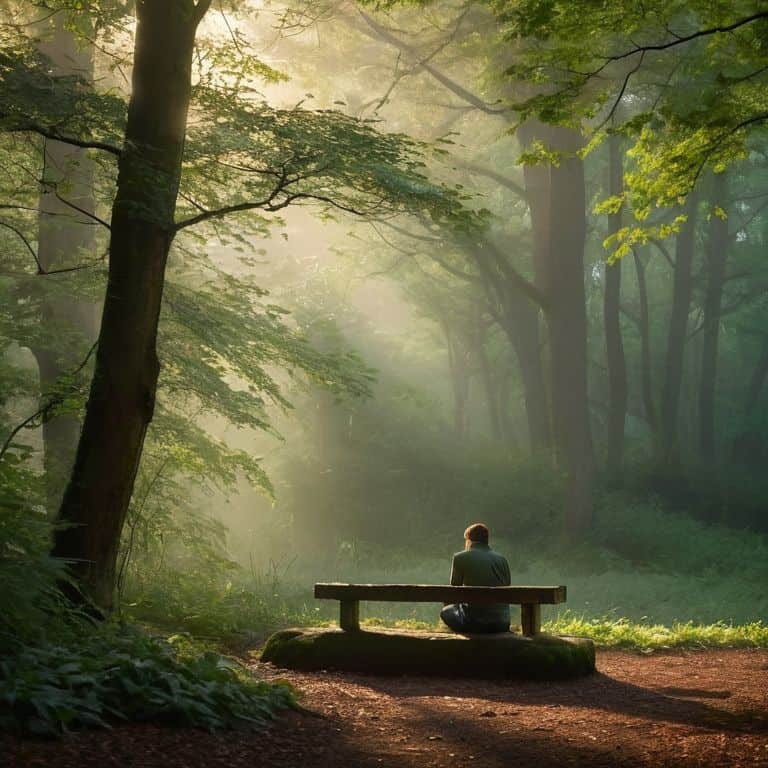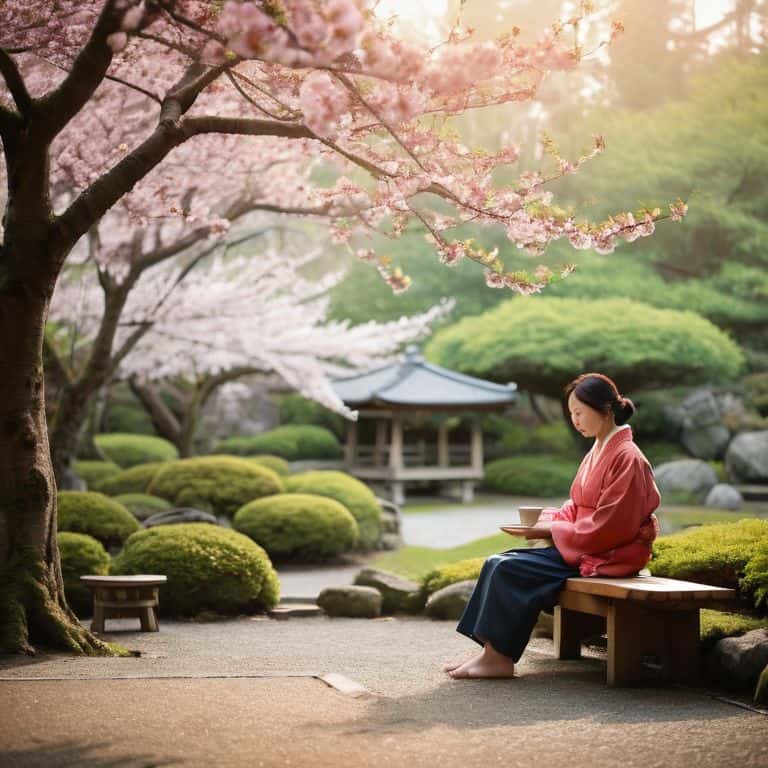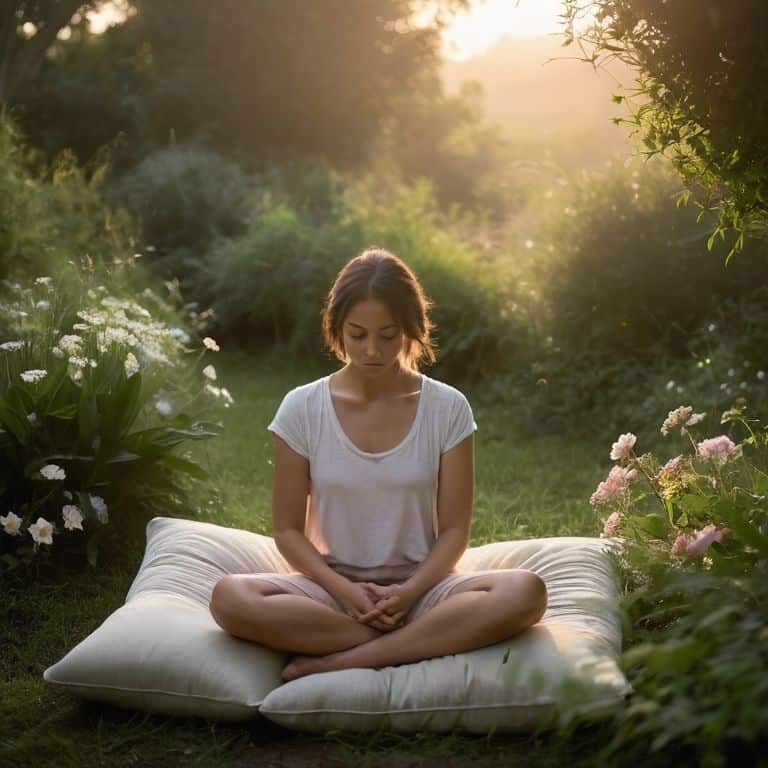As I sit here, surrounded by the serene beauty of nature, I invite you to take a deep breath in and let’s explore the question, what is mindfulness? I used to think it was all about emptying my mind, but my journey has taught me that it’s actually about gently returning to the present moment. I’ve seen how the concept of mindfulness can be shrouded in mystery, with some believing it requires a specific set of skills or a certain level of spiritual enlightenment. But I’m here to tell you that mindfulness is simpler than that.
In this article, I promise to share my personal story and provide honest, experience-based advice on what mindfulness truly means. I’ll guide you through the process of discovering the quiet space within yourself, no matter the external chaos. My goal is to demystify mindfulness and make it a simple, accessible tool for anyone. I’ll share with you the same techniques that have helped me find peace and stillness in my own life, and I hope that by the end of this journey, you’ll have a deeper understanding of what is mindfulness and how it can positively impact your life.
Table of Contents
Discovering Inner Peace

To discover inner peace, I invite you to start by taking a deep breath in, and as you exhale, allow your eyes to gently focus on the present moment. As I’ve learned through my own journey, cultivating self awareness is key to unlocking a sense of calm within. By doing so, we can begin to let go of worries about the past or future, and simply be.
As we explore the benefits of mindfulness meditation, we find that regular practice can lead to a significant reduction in anxiety and stress. One of my favorite mindfulness exercises for anxiety is a simple body scan, where we lie down or sit comfortably, and bring our attention to each part of our body, starting from our toes and moving up to the top of our head. This helps us develop non-judgmental awareness, allowing us to observe our thoughts and emotions without getting caught up in them.
By embracing the importance of living in the present, we can begin to experience a sense of freedom and lightness in our daily lives. As we practice mindfulness based stress reduction techniques, such as mindful walking or eating, we become more aware of our thoughts, emotions, and physical sensations. This, in turn, helps us develop a greater sense of self-awareness, allowing us to respond to challenging situations with more clarity and compassion, rather than simply reacting to them.
Benefits of Mindfulness Meditation
As I sit in stillness, I’ve come to realize that the regular practice of mindfulness meditation has a profound impact on my daily life. It’s as if the calmness I cultivate during meditation seeps into every moment, allowing me to approach challenges with a clearer mind.
By incorporating mindfulness meditation into my routine, I’ve experienced the deep sense of calm that comes from being fully present. This, in turn, has improved my focus, relationships, and overall well-being, reminding me that mindfulness is a journey, not a destination.
Cultivating Self Awareness Through Mindfulness
To cultivate self-awareness, I invite you to start by noticing your breath, feeling the sensation of the air moving in and out of your body. As you breathe deeply, allow yourself to settle into the present moment, letting go of distractions. This simple act can help you tune into your inner world, gaining clarity on your thoughts, emotions, and physical sensations.
As you practice mindfulness, you’ll begin to develop a greater sense of self-acceptance, embracing your experiences without judgment. By paying attention to your thoughts and emotions, you’ll become more aware of your patterns and habits, allowing you to make conscious choices that align with your values and goals.
What Is Mindfulness Anyway

As I sit in stillness, surrounded by the serene beauty of nature, I’m reminded of the importance of living in the present. It’s a concept that has become increasingly vital in our fast-paced world, where distractions are abundant and quiet moments are scarce. For me, the journey to understanding mindfulness began with a simple question: what does it mean to be fully engaged in the current moment?
Mindfulness, at its core, is about cultivating non-judgmental awareness of our thoughts, feelings, and sensations. It’s a practice that encourages us to observe our experiences without attachment or aversion, allowing us to respond more skillfully to life’s challenges. By incorporating mindfulness exercises for anxiety into our daily routine, we can begin to develop a greater sense of calm and clarity, even in the midst of chaos.
As we explore the realm of mindfulness, we may discover that it’s not just a technique, but a way of being. Cultivating self-awareness through mindfulness allows us to tune into our inner world, gaining a deeper understanding of our values, intentions, and emotions. By doing so, we can unlock the benefits of mindfulness meditation, which include reduced stress, increased focus, and a greater sense of overall well-being.
Importance of Non Judgmental Awareness Techniques
As I sit in stillness, I’m reminded that non-judgmental awareness is the foundation of mindfulness. It’s the practice of observing our thoughts, emotions, and sensations without labeling them as good or bad. This allows us to develop a deeper understanding of ourselves and the world around us.
By cultivating gentle curiosity, we can learn to approach our experiences with an open and receptive mind. This means letting go of preconceptions and expectations, and instead, allowing things to unfold as they are. In this way, we can find peace and clarity, even in the midst of chaos.
Mindfulness Exercises for Anxiety Relief
To find calm in the midst of anxiety, I recommend starting with simple breathing techniques. Take a deep breath in, and as you exhale, allow any tension to release. This gentle practice can be done anywhere, at any time, and is a great way to begin your mindfulness journey.
As you become more comfortable with mindfulness, you can explore body scan meditations to release physical tension. Lie down or sit comfortably, and bring your attention to each part of your body, starting from your toes and moving up to the top of your head, letting go of any discomfort or stress as you breathe.
Embracing Mindfulness: 5 Gentle Reminders
- Begin with a single breath: take one deep inhale, and as you exhale, feel the tension in your body gently release
- Notice the sensation of your feet on the ground: feel the weight, the texture, and the connection to the earth beneath you
- Let go of the need to achieve: mindfulness isn’t about accomplishing a specific state, but rather about being present in the current moment
- Practice self-compassion: treat yourself with kindness and understanding, just as you would a close friend
- Bring mindfulness into daily activities: pay attention to your senses while eating, walking, or even doing the dishes, and discover the beauty in the mundane
Embracing Mindfulness: 3 Key Takeaways
Mindfulness is a journey, not a destination – it’s about gently returning to the present moment, one breath at a time, to find inner peace and clarity
By cultivating self-awareness and non-judgmental awareness, we can develop a deeper understanding of ourselves and the world around us, leading to greater compassion and wisdom
Through simple yet powerful mindfulness exercises, such as meditation and silent walking, we can reduce anxiety, increase calm, and discover a sense of stillness that stays with us long after the practice is over
Embracing the Present
Mindfulness is not a destination, but a gentle return to the present moment, where the beauty of life unfolds in every breath.
Elara Keane
Embracing the Journey of Mindfulness

As we explore the concept of mindfulness, it’s essential to remember that it’s a journey, not a destination. We’ve discussed the benefits of mindfulness meditation, from reducing anxiety to cultivating self-awareness. We’ve also touched on the importance of non-judgmental awareness techniques in our daily lives. By incorporating these practices into our routine, we can begin to appreciate the beauty of being present in the moment. Whether through silent walking meditation or the serene ritual of the Japanese tea ceremony, we can find peace in the stillness.
As we conclude our exploration of what mindfulness is, I invite you to take a deep breath and acknowledge the quiet space within yourself. It’s a space that’s always available, waiting to be nurtured and explored. Remember, mindfulness is not about achieving a specific state; it’s about gently returning to the present, one breath at a time. As you embark on this journey, may you find the stillness, clarity, and peace that you seek, and may it guide you through life’s challenges with gentle ease and compassion.
Frequently Asked Questions
How can I incorporate mindfulness into my daily routine without feeling overwhelmed?
Take a deep breath in, and as you exhale, begin by committing to just one mindful moment each day. It can be as simple as pausing to breathe before a meal, or noticing the sensation of your feet on the ground as you walk. Start small, and gently expand from there.
What's the difference between mindfulness and meditation, or are they essentially the same thing?
Take a deep breath in, and out. To me, mindfulness and meditation are intertwined, yet distinct. Mindfulness is the awareness we bring to each moment, while meditation is a practice that helps cultivate that awareness, often through focused attention on the breath or body. Think of meditation as a tool to deepen mindfulness, allowing us to live more presently in our daily lives.
Can mindfulness really help with stress and anxiety, and if so, how does it work?
Take a deep breath in, and as you exhale, allow your shoulders to relax. Mindfulness can indeed help with stress and anxiety by teaching you to gently acknowledge your thoughts, rather than getting caught up in them. By focusing on the present moment, you can learn to calm your mind and find a sense of peace, even in chaos.
